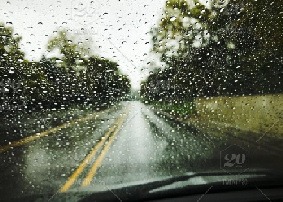5 Tips for Driving in the Rain

Many people assume that rain isn’t that dangerous to drive in. Still, the fact is that rain causes a significant number of accidents because of the standing water, minimal road friction, and limited visibility. Driving in the rain can also be stressful if the visibility becomes low enough. Despite this, some tips can help you keep safe while driving in the rain.
Before you get into an accident, make sure you have a good car insurance plan. Research car insurance rates to find the best option available to you.
Follow these five tips to avoid getting stuck in the rain or head-on collision due to reduced vision.
-
Slow down and leave some room
This is usually the first rule while driving in the rain. Speeding in the rain makes your vehicle susceptible to sliding and slipping, and in case you break suddenly, there is a high chance of slamming into the front car because less traction makes it longer to bring the vehicle to a halt. A chart published by the Queensland Government in Australia shows that the braking speed increases while driving in the rain. Rain creates a slick road, which raises the amount of time your car is going to take to stop.
-
Turn on your lights
Every time you want to use your windshield wipers, it’s advisable to turn your headlights. In fact, this is a law in some states. The downpour makes it hard for other drivers to see a vehicle coming and especially when the car has a neutral color like white or silver. Low visibility can result in a collision.
However, during heavy rains, you see many people driving while hazard lights are on to show they are moving slowly. This isn’t the case in Florida; in fact, it is illegal to drive with hazard lights unless you are in a funeral procession. In Florida, it rains heavily, and this can be a daily experience, but you aren’t allowed to use hazard lights because you will distract other drivers.
-
Avoid driving through standing water
Driving through standing water is dangerous as it can make the car lose control. This can also cause your car to hydroplane and damage the electrical components and engine when the water is pushed to the engine. You may not be able to tell how deep the standing water is, but it will only take about a foot of water for the car to be swept away. So, it’s better not to try to drive through any standing water if the painted markings of the road are not visible.
-
Avoid hydroplaning
Hydroplaning occurs when there is reduced traction between the road and your car tires due to excessive water. As a result, your vehicle may start sliding uncontrollably because, during the first minutes of rainfall, the roads get a slick layer of oil and water. You could wait for a while so that the rain can wash away all the substances that were stirred up.
Still, you can hydroplane when driving too fast. If that happens, you just need to slow down, let off the gas and steer to any direction you want to go. According to the U.S. Department of Transportation report, at least 900,000 vehicles crash every year due to wet roads, which results in 352,000 injuries and 4,400 deaths.
-
Turn off cruise control.
Cruise control is not necessary for wet weather. On slick surfaces, it might cause you to lose control because it can’t detect water-laden pavement where the vehicle can hydroplane. You might think that the computer will help you keep a steady speed, but if you start hydroplaning, your car will go faster. So it’s best to take full control of the vehicle while driving in the rain. Although the stability traction control of your vehicle might react when things are wrong, you shouldn’t put yourself in such a position first. Besides, once the vehicle has lost power, it could be challenging to stabilize it and end up in an accident.
If you can’t handle the vehicle or see clearly when it is raining, you should pull over the car to a safe place and wait for the storm to pass. In case you see a risk of flash flooding, you should move to higher ground. Check whether you can find a safe spot indoors. You must avoid driving through floodwaters or conditions you are not confident with. Most drivers underestimate the standing water and the dangers of driving in the rain, which has led to the loss of thousands of lives in accidents every year. Hopefully, this article helps you driver safer while it is raining.



